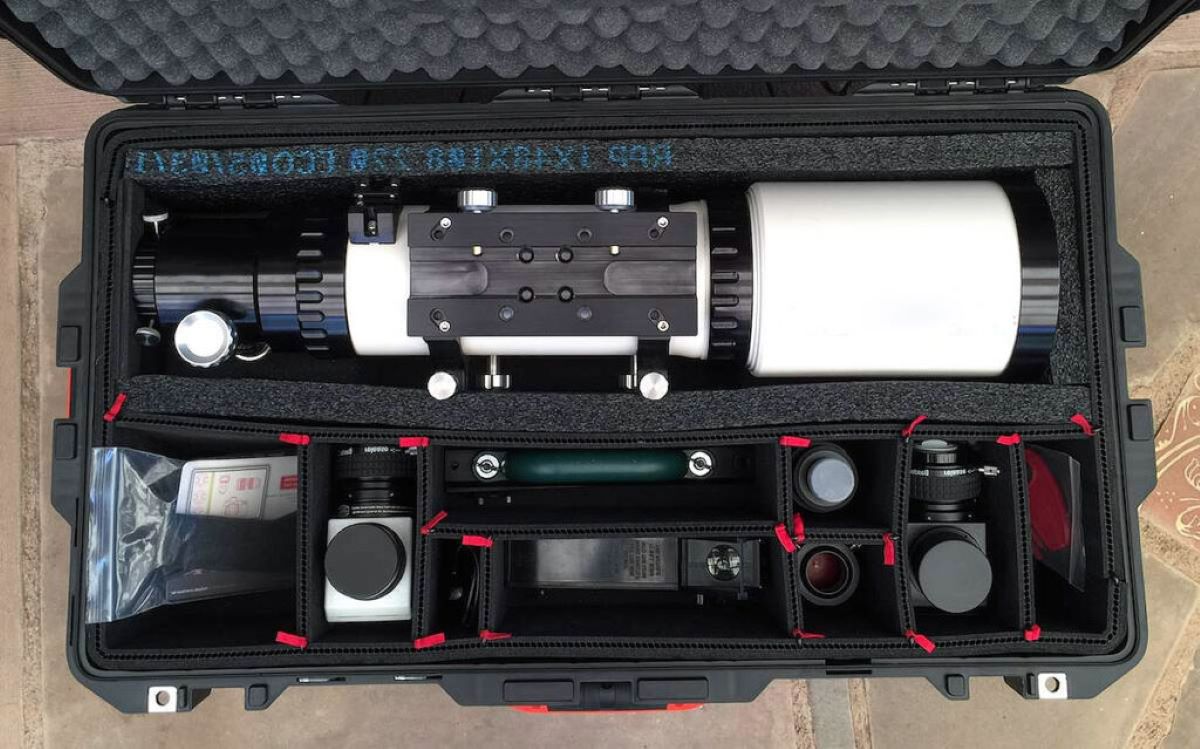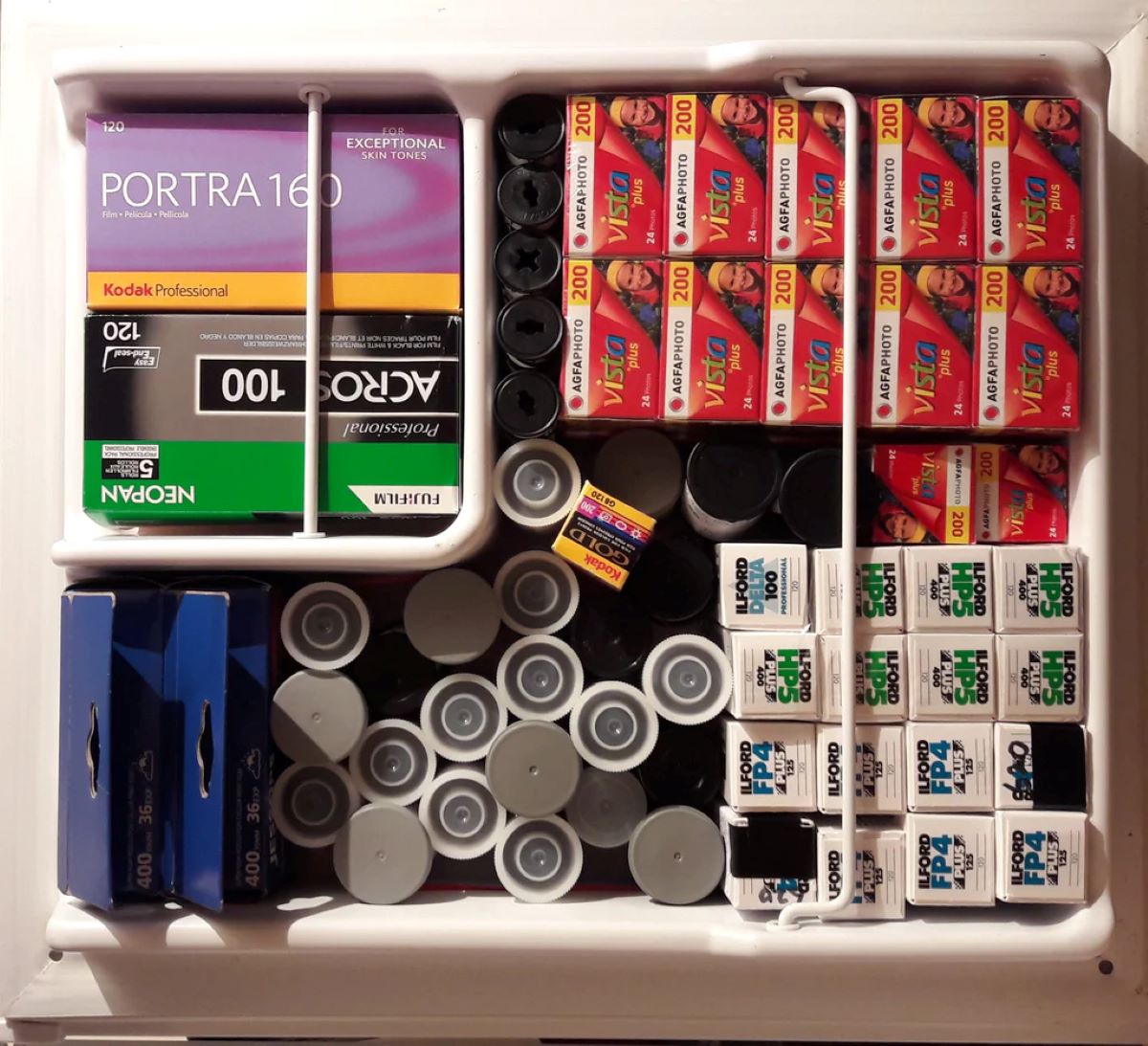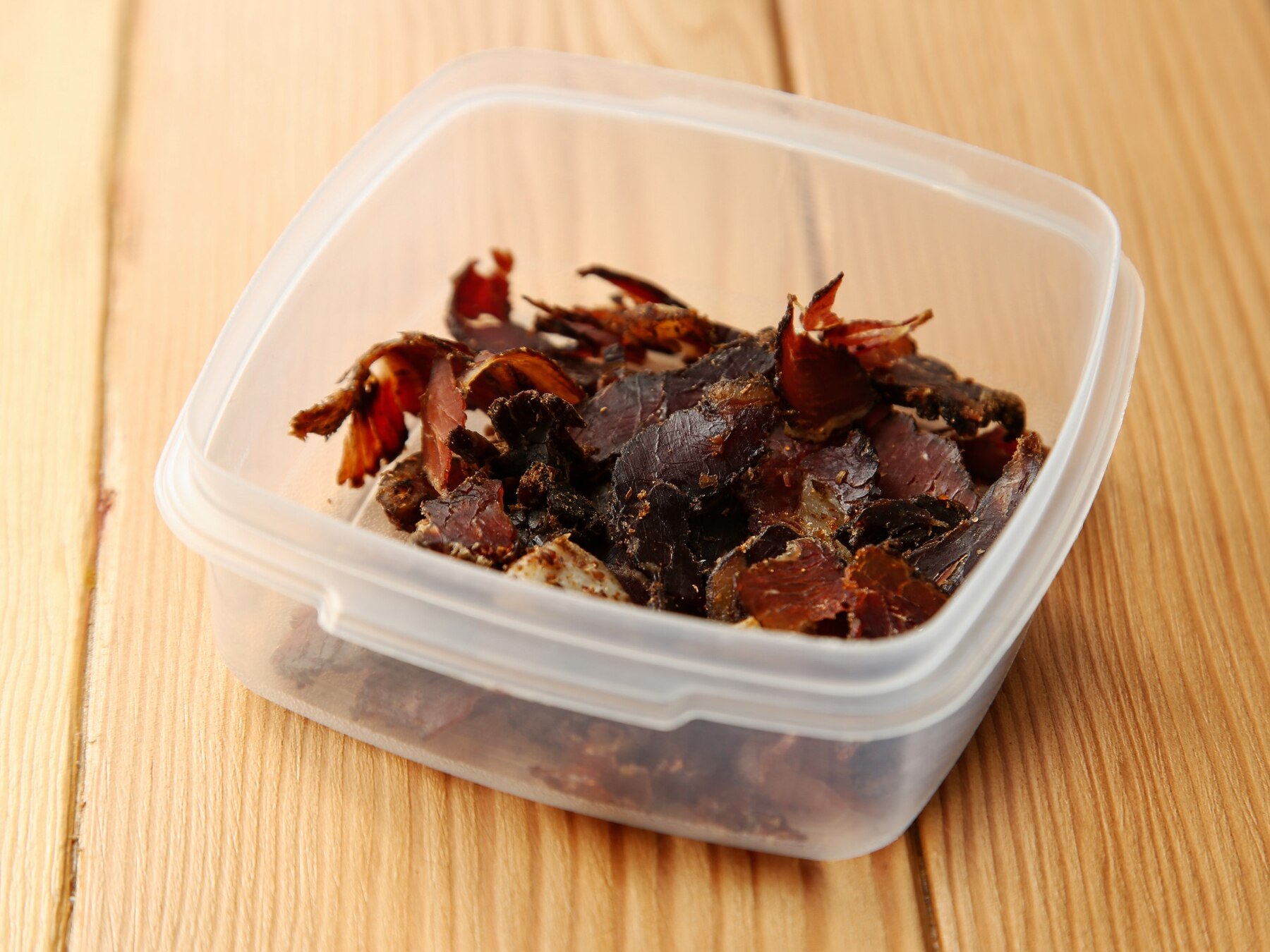

Articles
How To Store Prosciutto
Modified: May 6, 2024
Discover the best ways to store prosciutto in this informative article. Learn how to keep this delicious cured meat fresh and flavorful for longer periods.
(Many of the links in this article redirect to a specific reviewed product. Your purchase of these products through affiliate links helps to generate commission for Storables.com, at no extra cost. Learn more)
Introduction
Welcome to the mouthwatering world of prosciutto! If you’re a fan of this savory Italian delicacy, you know that proper storage is key to maintain its quality and taste. Prosciutto, a dry-cured ham made from pork, is known for its rich flavor, delicate texture, and distinctive aroma. Whether you enjoy it thinly sliced as a standalone treat or used as an ingredient in various recipes, knowing how to store prosciutto is essential for preserving its deliciousness.
In this article, we’ll guide you through the ins and outs of prosciutto storage, covering important factors to consider and various methods you can employ. Whether you’re a prosciutto connoisseur or just beginning to explore its delights, this guide will help ensure that your prosciutto stays fresh and flavorful for as long as possible.
So, grab a slice of prosciutto, sit back, and let’s dive into the art of prosciutto storage!
Key Takeaways:
- Proper prosciutto storage is essential to maintain its rich flavor and delicate texture. Consider factors like temperature, humidity, and air exposure, and choose between refrigerator and room temperature storage based on your preferences and usage frequency.
- To extend the shelf life of prosciutto, follow best practices such as wrapping it properly, monitoring for spoilage, and considering freezing for long-term storage. Enjoy the mouthwatering goodness of prosciutto with confidence in its freshness and quality.
Read more: How To Store Store-Bought Bread
Understanding Prosciutto
Before we delve into the intricacies of prosciutto storage, it’s important to have a basic understanding of this delectable cured meat. Prosciutto is traditionally made from the hind legs of pigs, and the process involves dry-curing the meat with salt and hanging it to age for several months. This method allows the flavors to intensify and gives prosciutto its distinct taste.
There are two main types of prosciutto: prosciutto crudo and prosciutto cotto. Prosciutto crudo, also known as Italian prosciutto, is the most popular variety and is served uncooked. It has a slightly salty and nutty flavor and a delicate texture that melts in your mouth. On the other hand, prosciutto cotto is cooked or cured with heat, resulting in a sweeter and slightly firmer texture compared to prosciutto crudo.
Prosciutto is a versatile ingredient that can be enjoyed in a variety of ways. It pairs perfectly with crusty bread, fresh melon, or even as a topping for pizza or pasta. Its rich flavor can add depth to salads, sandwiches, and charcuterie boards. With its wide range of uses, it’s no wonder that prosciutto has become a culinary favorite worldwide.
When it comes to selecting prosciutto for storage, choose high-quality products from reputable sources. Look for prosciutto that is firm to the touch, with a deep red color and marbled fat. Avoid prosciutto that appears slimy or has an off odor, as these are indicators of spoilage.
Now that we have a better understanding of prosciutto, let’s explore the factors that you should consider when it comes to proper storage.
Factors to Consider for Proper Storage
When it comes to storing prosciutto, several factors can affect its overall quality and shelf life. By taking these factors into account, you can ensure that your prosciutto remains fresh and full of flavor for as long as possible.
Temperature: Prosciutto should be stored at the right temperature to maintain its texture, flavor, and safety. Both extreme cold and heat can negatively impact the quality of the meat. It’s best to store prosciutto at a temperature between 35°F (2°C) and 50°F (10°C). This range allows the prosciutto to retain its moisture without allowing harmful bacteria to proliferate.
Humidity: Another crucial factor to consider when storing prosciutto is humidity. Too much moisture can cause the prosciutto to spoil or develop mold, while low humidity can result in the meat drying out and becoming overly tough. Aim for a humidity level of around 60-70% to maintain the perfect balance and preserve the prosciutto’s texture and flavor.
Air Exposure: Prosciutto is a delicate meat that can easily be impacted by exposure to air. When prosciutto is exposed to air, it can dry out and become less flavorful. It is important to minimize the amount of air exposure by properly wrapping the prosciutto and storing it in an airtight container or packaging. This will help to maintain its quality and prevent it from absorbing any unwanted odors.
Light: Exposure to light can also deteriorate the quality of prosciutto. Ultraviolet (UV) light can cause the fat in prosciutto to oxidize and develop a rancid taste. Ideally, prosciutto should be stored in a dark place to prevent any UV light from reaching it. If you store prosciutto in a refrigerator, make sure it is in a sealed, opaque container or wrapped in dark-colored paper or foil.
Now that you understand the key factors to consider for proper prosciutto storage, let’s explore the different methods you can choose from to store your prosciutto.
Choosing the Right Storage Method
When it comes to storing prosciutto, you have two main options: storing it in the refrigerator or at room temperature. Each method has its own pros and cons, so it’s important to choose the one that best suits your needs and preferences.
Refrigerator Storage: Storing prosciutto in the refrigerator is the most common method, as it helps maintain the meat’s freshness for a longer period. When refrigerated, prosciutto remains cool, reducing the risk of bacterial growth. To store prosciutto in the refrigerator, wrap it tightly in plastic wrap or use airtight containers to prevent air exposure. Place it in the coldest part of the refrigerator, such as the meat drawer or the back of the fridge, where the temperature is most consistent.
Room Temperature Storage: If you prefer to enjoy prosciutto with its natural flavors and texture, storing it at room temperature is an option. Prosciutto can be stored at room temperature in a cool, dry place, away from direct sunlight and heat sources. This method allows the prosciutto to breathe and develop its full aroma. However, keep in mind that prosciutto stored at room temperature is more susceptible to spoilage and should be consumed within a shorter timeframe compared to refrigerated prosciutto.
When choosing the storage method, consider the following factors:
- Frequency of Use: If you plan on consuming prosciutto slowly over a longer period, refrigeration is the preferred method as it extends the shelf life. If you enjoy prosciutto frequently and consume it within a few days, storing it at room temperature is a viable option.
- Flavor Preferences: Some people enjoy the richer flavors and slightly softer texture of room temperature prosciutto, while others prefer the firmer texture and milder taste of refrigerated prosciutto.
- Safety Considerations: Refrigerator storage provides better protection against bacterial growth and reduces the risk of foodborne illnesses.
Ultimately, the choice between refrigerator storage and room temperature storage depends on personal preference and the specific circumstances.
Now that you know the different storage methods, let’s delve into how to properly store prosciutto in the refrigerator.
Storing Prosciutto in the Refrigerator
If you prefer to store your prosciutto in the refrigerator for optimal freshness and longevity, follow these steps:
- Wrap it Properly: Tightly wrap the prosciutto in plastic wrap or aluminum foil. This will help prevent air exposure and maintain the moisture and flavor of the meat. Alternatively, you can store it in an airtight container or vacuum-sealed bag.
- Choose the Right Location: Place the wrapped prosciutto in the coldest part of your refrigerator, such as the meat drawer or the back of the fridge. This area typically offers a more consistent temperature.
- Avoid Cross-Contamination: Keep prosciutto away from strong-smelling foods, such as onions or garlic, as it can absorb their odors. If possible, store it in a separate compartment or container to prevent any unwanted flavors from transferring.
- Check and Rotate: Regularly check the prosciutto for any signs of spoilage, such as an off odor or slimy texture. If you notice any issues, discard the affected portion immediately. Additionally, if you have multiple pieces of prosciutto, rotate them to ensure even exposure and usage.
Prosciutto stored in the refrigerator can typically last anywhere from a few weeks up to several months, depending on its initial freshness and the storage conditions. However, note that the texture and flavor may change over time, so it’s best to consume it within a reasonable timeframe for the best experience.
Now, if you prefer to enjoy prosciutto at room temperature, let’s explore the proper method for storing it outside of the refrigerator.
Store prosciutto in the refrigerator wrapped in parchment paper and then in a resealable plastic bag. This will help keep it fresh and prevent it from drying out.
Read more: How To Store Basil From Grocery Store
Storing Prosciutto at Room Temperature
If you prefer to store your prosciutto at room temperature to fully appreciate its natural flavors and texture, here are some guidelines to follow:
- Find the Right Spot: Look for a cool, dry place in your kitchen or pantry to store the prosciutto. Ensure that it is away from direct sunlight, heat sources, and areas with high humidity.
- Properly Wrap or Cover: To prevent the prosciutto from drying out or being exposed to air, wrap it in a clean, breathable cloth, such as cheesecloth or parchment paper. This will help maintain the moisture levels while still allowing the prosciutto to breathe.
- Avoid Strong Odors: Keep the prosciutto away from other strong-smelling foods, spices, or chemicals that could taint its delicate flavor. Store it in a separate compartment or container if possible.
- Frequent Monitoring: Regularly check the prosciutto for any signs of spoilage, such as mold, off odors, or changes in texture. If you notice any issues, discard the affected portion immediately.
When stored at room temperature, prosciutto is best consumed within a few days to a week, depending on the initial freshness of the meat. Keep in mind that room temperature storage can increase the risk of bacterial growth, so proper hygiene and food safety practices are important.
Remember, the texture and taste of prosciutto stored at room temperature may be slightly different from refrigerated prosciutto. The meat might become slightly softer and develop a more intense flavor profile due to the natural aging process.
Now that you know how to store prosciutto both in the refrigerator and at room temperature, let’s explore some additional tips to help extend its shelf life and maintain its quality.
Tips for Extending Prosciutto Shelf Life
To ensure that your prosciutto stays fresh and flavorful for as long as possible, consider these helpful tips:
- Buy in Small Portions: Instead of purchasing a large quantity of prosciutto at once, buy it in smaller portions that you can consume within a reasonable timeframe. This will help prevent waste and ensure that you always have fresh prosciutto on hand.
- Handle with Clean Hands: When handling prosciutto, make sure your hands are clean to avoid introducing bacteria that can accelerate spoilage. Remember to wash your hands thoroughly before touching the meat.
- Slice Prosciutto as Needed: If you have a whole prosciutto leg, it’s best to slice it as needed rather than slicing it all at once. This helps maintain the freshness and quality of the remaining portion.
- Store Sliced Prosciutto Properly: If you have sliced prosciutto, store it in an airtight container or wrap it tightly in plastic wrap to preserve its texture and prevent it from drying out.
- Label and Date: When storing prosciutto, label and date the packaging to keep track of its freshness. This allows you to consume the oldest prosciutto first and avoid keeping it past its recommended storage duration.
- Use Clean Utensils: When cutting prosciutto, use clean utensils to prevent cross-contamination. Avoid using utensils that have come into contact with other types of meat or strong-smelling ingredients.
- Freeze for Long-Term Storage: If you have excess prosciutto that you won’t be able to consume within a reasonable timeframe, consider freezing it. Wrap the prosciutto tightly in plastic wrap or place it in an airtight container before freezing. Frozen prosciutto can last for several months, but note that the texture may change slightly after thawing.
By following these tips, you can maximize the shelf life of your prosciutto and enjoy it at its best quality for an extended period.
Now, let’s address some common questions about prosciutto storage before we wrap up.
Frequently Asked Questions (FAQs)
Q: Can I freeze prosciutto?
A: Yes, you can freeze prosciutto for longer-term storage. Make sure to wrap it tightly in plastic wrap or place it in an airtight container to prevent freezer burn. Thaw frozen prosciutto in the refrigerator before consuming.
Q: How long does prosciutto last?
A: The shelf life of prosciutto depends on the storage method. When refrigerated, prosciutto can last for a few weeks to several months. At room temperature, it is best consumed within a few days to a week for optimal quality.
Q: What should I look for when checking if prosciutto is spoiled?
A: Pay attention to any signs of mold, sliminess, or unpleasant odors. If the prosciutto has an off smell or slimy texture, it is likely spoiled and should be discarded.
Q: Can I store prosciutto in the pantry?
A: It is generally not recommended to store prosciutto in the pantry as it is best preserved in a cool, dry place with controlled temperature and humidity. Storing prosciutto in the pantry increases the risk of spoilage.
Q: Can I store prosciutto in the same container as other meats?
A: It is best to store prosciutto separately from other meats, especially meats with strong odors. Prosciutto can easily absorb odors from other foods, affecting its flavor profile.
Q: How can I tell if prosciutto has gone bad?
A: If the prosciutto develops a foul smell, mold, or a slimy texture, it is a clear indication that it has spoiled. Trust your senses and discard any prosciutto that appears questionable.
Q: Can I store opened prosciutto packaging?
A: Yes, you can store opened prosciutto packaging, but make sure to wrap it tightly or transfer it to an airtight container to maintain its quality. The sooner you consume the opened prosciutto, the better.
Q: Can I reuse the prosciutto packaging for storage?
A: It is best to avoid reusing the prosciutto packaging for storage, as it may not provide adequate protection against air or moisture. Opt for using fresh wrapping materials or airtight containers for optimal prosciutto storage.
These FAQs should provide answers to some common questions about prosciutto storage. Now, let’s wrap up this article.
Conclusion
Prosciutto is a beloved delicacy that brings a taste of Italy to our plates. To ensure that your prosciutto stays fresh, flavorful, and safe to consume, proper storage is crucial. Whether you choose to store it in the refrigerator or at room temperature, following the right methods and considering important factors such as temperature, humidity, air exposure, and light can greatly impact the prosciutto’s longevity and quality.
When storing prosciutto in the refrigerator, wrap it tightly in plastic wrap or use airtight containers, and place it in the coldest part of the fridge. For room temperature storage, find a cool, dry place away from direct sunlight and strong odors, using breathable materials to wrap or cover the prosciutto.
By following the guidelines and tips provided in this article, you can extend the shelf life of your prosciutto and savor its distinct flavors for as long as possible. Remember to regularly check for signs of spoilage and practice good hygiene when handling and storing the meat.
Whether you enjoy prosciutto on its own, paired with your favorite ingredients, or incorporated into various recipes, maintaining its quality through proper storage ensures the best possible culinary experience. So, go ahead and indulge in the mouthwatering goodness of prosciutto, knowing that you have the know-how to keep it fresh and delicious.
Now you’re ready to explore the incredible world of prosciutto without worrying about its storage requirements. Bon appétit!
Now that you've mastered storing prosciutto, why not delve deeper into preservation methods? Our next feature on cold storage offers fresh insights and up-to-date strategies for keeping perishables at their best. Whether you’re a seasoned foodie or just starting, understanding these techniques will surely enhance your culinary storage solutions.
Frequently Asked Questions about How To Store Prosciutto
Was this page helpful?
At Storables.com, we guarantee accurate and reliable information. Our content, validated by Expert Board Contributors, is crafted following stringent Editorial Policies. We're committed to providing you with well-researched, expert-backed insights for all your informational needs.















0 thoughts on “How To Store Prosciutto”